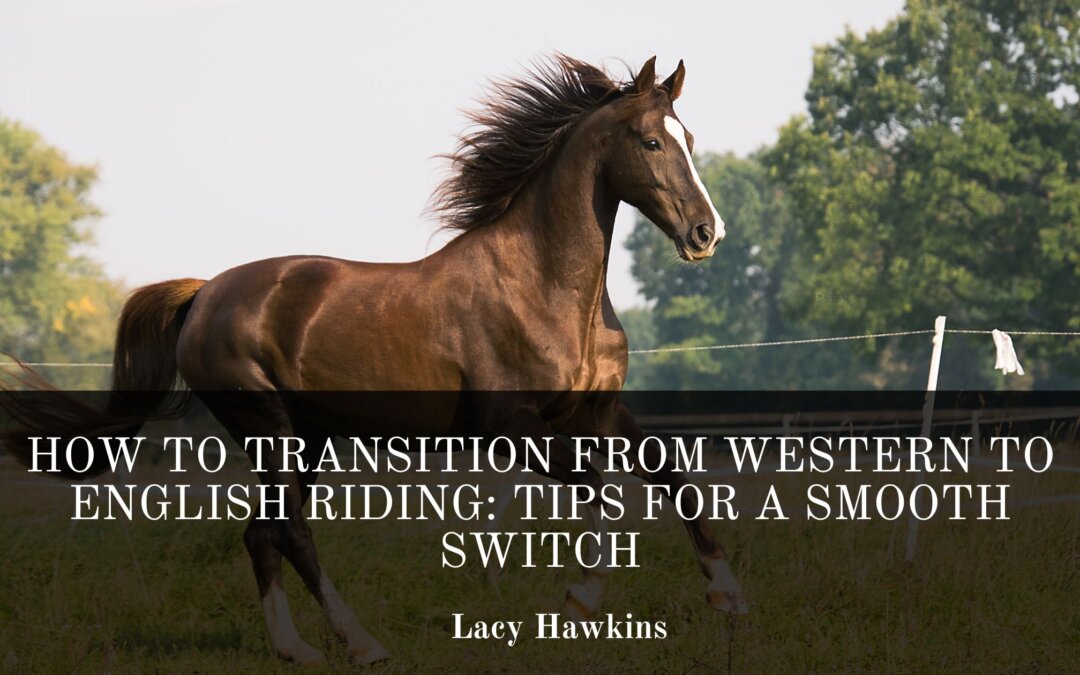Transitioning from Western to English riding can be an exciting and rewarding journey for any equestrian. The two disciplines have distinct differences in riding style, equipment, and techniques, but with the right approach, you can make the switch smoothly and confidently. Whether you’re drawn to the elegance of English riding or seeking to expand your skills, here are some practical tips to help you make the transition.
1. Understanding the Differences in Riding Style
The most noticeable difference between Western and English riding is the riding posture and technique. In Western riding, riders tend to sit deeper in the saddle with a more relaxed posture, while in English riding, the rider adopts a more upright, forward position.
When you switch to English riding, it’s important to adjust your posture. English riders typically keep their heels down, shoulders back, and legs slightly forward, which is different from the more laid-back stance common in Western riding. Focus on sitting up straight and aligning your body with the saddle to maintain balance and proper form.
2. Adjusting to the English Saddle
The English saddle is significantly lighter and smaller than the Western saddle, which can feel quite different when you first sit in it. Unlike the wide, deep seat of a Western saddle, the English saddle is flatter and allows for more mobility. It also has shorter stirrups, which require you to keep your legs in a more forward position compared to the longer stirrups used in Western riding.
At first, the change in saddle fit may feel unfamiliar, but give yourself time to adjust. To help with this transition, practice riding with shorter stirrups gradually to get used to the position. Make sure the saddle fits both you and your horse properly, as an ill-fitting saddle can cause discomfort and hinder your performance.
3. Learning to Hold the English Reins
In Western riding, the reins are held with a single hand, typically with a loose grip, allowing for more relaxed control. In English riding, however, reins are held with both hands, and the grip is usually firmer to allow for precise communication with the horse.
When transitioning, focus on using both hands to hold the reins, maintaining a steady but gentle contact with your horse’s mouth. Your hands should be close together and held in front of you at a neutral position, with your elbows bent at a 90-degree angle. Holding the reins correctly is essential for effective communication and control while riding.
4. Mastering English Riding Aids
In English riding, your legs and seat play a more significant role in communication with your horse than in Western riding. In Western disciplines, reins and voice cues are often used more heavily, but English riders rely more on subtle leg and seat aids.
For example, to ask your horse to move forward, you’ll need to use your legs with gentle pressure, while to slow down or stop, you’ll apply pressure with the reins. It’s essential to develop a light, consistent touch and avoid overly pulling on the reins. Practice using your legs and seat to influence your horse’s movement, which will be crucial for English riding disciplines like jumping and dressage.
5. Taking English Riding Lessons
While some Western riding skills will transfer to English riding, the best way to ensure a smooth transition is to take lessons from an experienced English riding instructor. They can guide you through the process, correct any mistakes, and help you refine your technique. A professional instructor will also provide you with valuable tips on seat position, rein handling, and proper aids.
Start with beginner lessons that focus on basic English riding skills, including walk, trot, and canter transitions. With time and practice, you’ll become more comfortable and confident in your new riding style.
6. Patience and Practice
Lastly, be patient with yourself. Transitioning from Western to English riding can take time, as it involves adapting to a new saddle, different riding position, and unfamiliar techniques. Practice regularly, and focus on building your skills gradually.
With dedication and persistence, you’ll be able to make a seamless transition and enjoy the beauty of English riding. The key is to take it one step at a time, stay consistent with your practice, and embrace the new challenges along the way.
Conclusion
The transition from Western to English riding can be both exciting and challenging, but with a positive attitude and these helpful tips, you can make the switch successfully. Focus on adjusting your posture, becoming familiar with the English saddle and reins, learning new riding aids, and seeking expert guidance. Over time, you’ll develop the skills and confidence needed to ride comfortably in the English style, opening up new possibilities for your equestrian journey.
